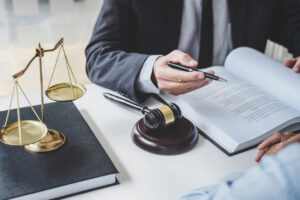
In criminal law, the defendant can be found either guilty or not guilty. Liability is the equivalent concept in civil law, including personal injury law – the at-fault party can be held liable or not liable for their actions or inactions.
Liability means that a person or entity is legally responsible for causing harm to another. In personal injury cases, there are many ways in which the victim can assert the liability of the party that caused their injuries.
This article will describe these methods in detail and will describe the types of damages that a personal injury victim can recover if they can successfully assert the liability of the at-fault person or entity.
Personal injury law is a subset of tort law, which is, in turn, a subset of civil law. Tort law encompasses all actions or inactions that cause harm to another person, whereas personal injury law is generally limited to physical harm.
In personal injury law, there are three primary causes of action that the victim can utilize to prove the liability of the at-fault party, which vary depending on the facts of the case in question. The personal injury victim has the burden of proof to supply evidence in favor of their chosen cause of action.
Negligence is the most common cause of action in the personal injury context. It means something close to “carelessness,” and it occurs when the following four legal elements are satisfied:
If the injured party can assert each of these elements “by a preponderance of the evidence” – meaning each is more likely to be true than false – they are well on their way to proving the at-fault party’s liability.
Strict liability is another cause of action personal injury victims can utilize, but only in certain types of cases. For example, product liability and dog bite cases often fall under strict liability as opposed to negligence.
Strict liability can be advantageous for the personal injury victim, as it can be easier to prove than negligence. Essentially, strict liability allows the injured party to hold the at-fault party liable regardless of whether or not they were careless in their actions or inactions.
For example, in a dog bite case, it can be enough to prove that the dog in question was owned by the at-fault party and that the dog bit the victim, causing damages as a result.
One caveat to dog bite cases in the State of Oregon is that the victim still must prove negligence in order to receive non-economic damages; they may still recover economic damages via strict liability, however. We’ll discuss more about damages below.
The third primary cause of action in personal injury law is intentional torts. Assault is a common type of personal injury case that can fall under an intentional tort cause of action.
As opposed to negligence and strict liability, here, the injured victim must prove that the at-fault party intended to cause them harm. Importantly, the at-fault party may be found not guilty in criminal court but then be held liable in civil court.
This possibility is because the burden of proof in criminal cases is “beyond a reasonable doubt,” which is the most difficult threshold to meet. For personal injury cases, as mentioned above, the threshold is “by a preponderance of the evidence.”
There cannot be any reasonable doubt as to the defendant’s guilt in criminal court, but the injured party need only demonstrate their contentions are more likely true than not to win in civil court.
Personal injury victims can recover two types of compensatory damages: economic and non-economic damages.
Economic damages represent the victim’s financial losses, such as:
Non-economic damages reflect the victim’s other losses that are not necessarily financial in nature, like:
There is also a third type of damages, referred to as punitive damages, that could also be available in personal injury cases. However, these damages are rarely awarded and are reserved for cases where the at-fault party acted egregiously, such as with reckless disregard for the safety of others.
Although these damages do end up in the victim’s pocket, they are intended to “punish” the at-fault party for their behavior.
If you’ve suffered a personal injury and need to establish the at-fault party’s liability, consider hiring an attorney. An experienced Portland personal injury lawyer can take care of every aspect of your legal claim for compensation while you rest and recover. Contact our law office today at (503) 773-3333 to schedule a free initial consultation at Tillmann Law Personal Injury Lawyers.
Most injury attorneys in the area also offer a free consultation to review your case, so it won’t hurt to reach out for legal advice and assistance.